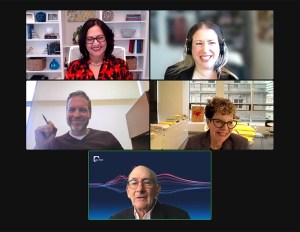Amenities and the New Office: Influence Awards Judges Weigh In
Insights from the panel on industry trends and the winning entries.
In a commercial real estate market rebounding from COVID, amenities have become even more of a priority as employers try to bring the shorts-and-blazer set back to the office.
That was a key insight from the judges of CPE‘s 2022 Influence Awards, who gathered Jan. 31 for a virtual roundtable to share observations on industry trends and challenges, as well on the awards themselves.
“It’s all about making getting to the office less of an obligation and more of an opportunity and pulling people back through open spaces and through amenities,” remarked Jay Epstien, the retired global co-chair of DLA Piper‘s real estate practice.
“Every building is amentized,” said Nancy Ruddy, co-founder & executive director of interior design at CetraRuddy, who noted that some more traditional amenities like ambitious rooftop terraces and luxe living spaces aren’t always well-used, even if they photograph well.
“We’re also going onto the next generation of saying, “How can we do it better, how can we make it more meaningful, better than just a bunch of sofas and a big-screen TV?” said Ruddy. “I think we’re going to be seeing people rethinking what an amenity is and thinking, perhaps, should there be more programing or should there be more services.”
READ ALSO: How CRE Boosts the Economy
The vital question, according to Ruddy, is “What do people value more than the relaxation component?”
Amenities haven’t worked to lure workers back to the office, especially in New York City, observed Ingrid Noone, senior managing director at FTI Consulting. “At FTI we say we have to earn our employees’ commute and having a ping pong table no longer is sufficient,” she said.
“The next generation of [amenities] should really be thought of really holistically, that it’s not just a physical asset but it’s an emotional asset, and it has to have meaning to people and encourage people to use them,” said Ruddy.
This may include the setting of the office itself, especially as it becomes clearer that not everyone who fled the cities will necessarily return and longer commutes become a tougher sell.
“In development, I think we’re seeing more commercial and office buildings coming to the residential areas,” said Ruddy. “Everyone supposedly wants that 20-minute city where they can live and walk to work and to their fitness and the library.”
Dustin Read, professor & director of the Master of Real Estate Development Program at Clemson University, reported that he is already seeing a shift in how some developers respond to these needs, including taking localized market context into their broader considerations.
“There are developers that are taking proactive steps to serve a market in a way it hasn’t been served in the past and that’s always going to be the mark of good development,” he said.
Economic headwinds
Financing challenges that stem from macroeconomic trends are also a concern for the industry, especially the choices the Federal Reserve will be making in the coming months.
Despite the challenges of 2021, “the industry not only survived but was full of creative, innovative thinking,” said Epstien. “Sitting in the summer of 2020, fall of 2020, I don’t think people would have predicted the level of activity in fall 2021.”
“Although 2021 may have been a bit challenging, I posit that some of those deals couldn’t get done in today’s environment, given the sharp increases in interest rates, and I think the biggest impediment to getting deals done is the uncertainty of the volatility,” said Noone. “People transact in upcycles and downcycles but transactions have slowed. I think people don’t want to be the first to transact and make a bad deal.”
Regardless, there is still a bustling commercial real estate market out there, noted Noone, even as some sit on the sidelines waiting for interest rates to top out. “There are always opportunities to make money and those well-capitalized companies that don’t need as much financing as over-levered companies may be doing the deals, even if they’re smaller-scale in smaller cities; we’re starting to see a little bit of movement.”
“Everybody’s waiting to see, obviously, what happens in Washington at the Fed,” agreed Epstien. “The capital is the most critical ingredient for all these transactions.”








You must be logged in to post a comment.